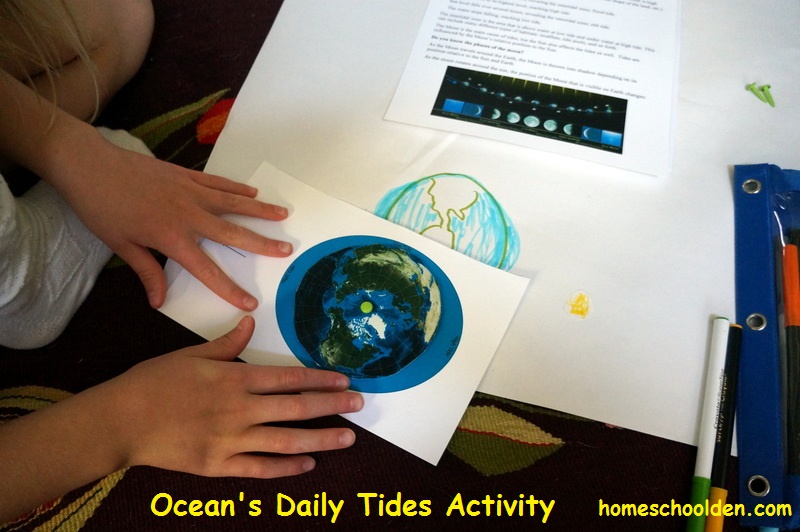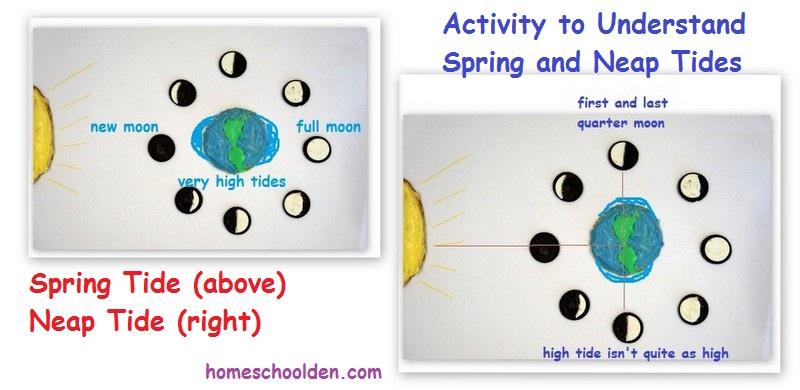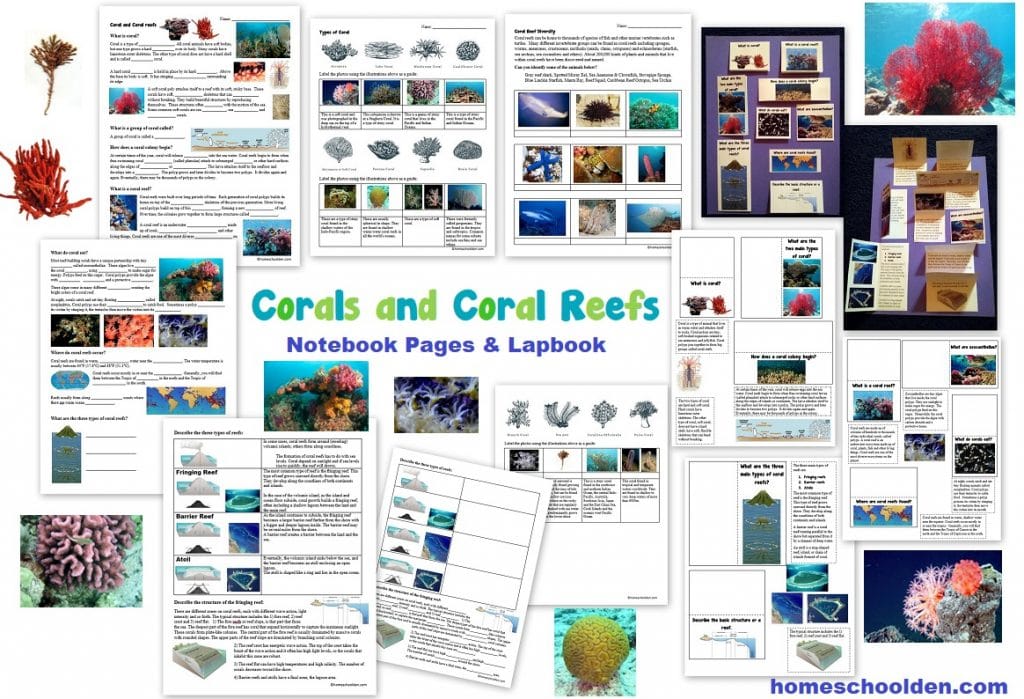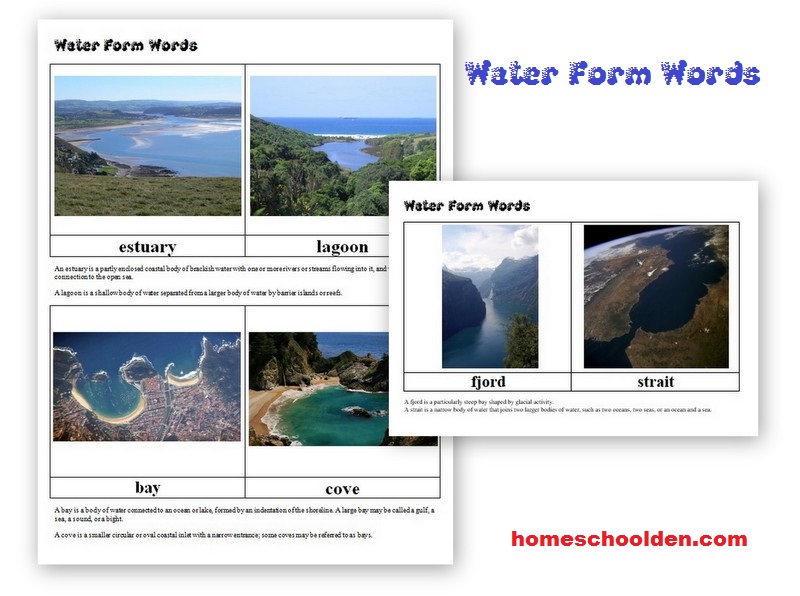Ocean Activities: The Moon and Tides (Spring and Neap Tides and more!)
Last week we talked about the moon and ocean tides. We talked about the phases of the moon and went into detail, not only about daily tides, but what causes spring tides and neap tides.
First, we talked about the effect gravity has on Earth’s waters. The moon pulls the Earth’s waters creating a bulge on one side. But, the moon also pulls on the Earth itself creating a bulge of water on the other side as well. (This is a printable I made for the kids that is in the Ocean Packet.)
After they cut out the pieces and attached them with a brad, they rotated the Earth and could see how there is a high tide, then moves to a low tide, high tide (on the other side), followed by a low tide again over the course of 24 hours.




When the sun and moon are in a line with the Earth, the pull (of gravity) on Earth’s oceans is greatest so the high tides are highest.
When the moon is at right angles (first and last quarter), the pull on Earth’s waters is diminished a bit because the moon’s gravity pulls at the waters, but so does the sun from a different angle. Therefore, the high tide is lower during this phase of the moon’s cycle.
We drew this on our paper, but here’s basically what we did:
New Moon, Spring Tide
- When the sun and moon are aligned, the highest high tides and lowest low tides are produced.
First Quarter, Neap Tide
- The moon and sun are at right angles to the Earth, producing the lowest high tides and the highest low tides.
Full Moon, Spring Tide
- The sun and moon align once again, and the Sun augments the Moon’s gravitational pull, causing a second spring tide.
Third Quarter, Neap Tide
- The Moon and Sun once again are at right angles to the Earth, causing a second Neap Tide.
The pages above and the pages about ocean currents are all available in our Ocean Unit Packet.

You may be interested in our other Ocean Unit Posts:
- Ocean Unit Packet: Marine Habitats, Tides, Currents, Ocean Floor, Ocean Life, Bioluminescence and More! Our 100+ page Ocean Curriculum is now available. See details here:
- Ocean Unit: 5 Salinity Activities & Why the Ocean is Salty
- Surface Currents, Deep Sea Currents Activities
- Ocean, Seas and Straits – Pin Map Printable
If you have younger kids you may be interested in the ocean activities we did when they were preschool and early elementary age:
- Ocean Animals and Their Groups
- Ocean Activities: The Ocean Zones, Layers of the Ocean
- Ocean Activities – diorama
Disclosure: Please note that some of the links in this post are affiliate links, and at no additional cost to you, I will earn a commission if you decide to make a purchase.
See you again soon here or over at our Homeschool Den Facebook Page. Don’t forget to Subscribe to our Homeschool Den Newsletter! ~Liesl






























































